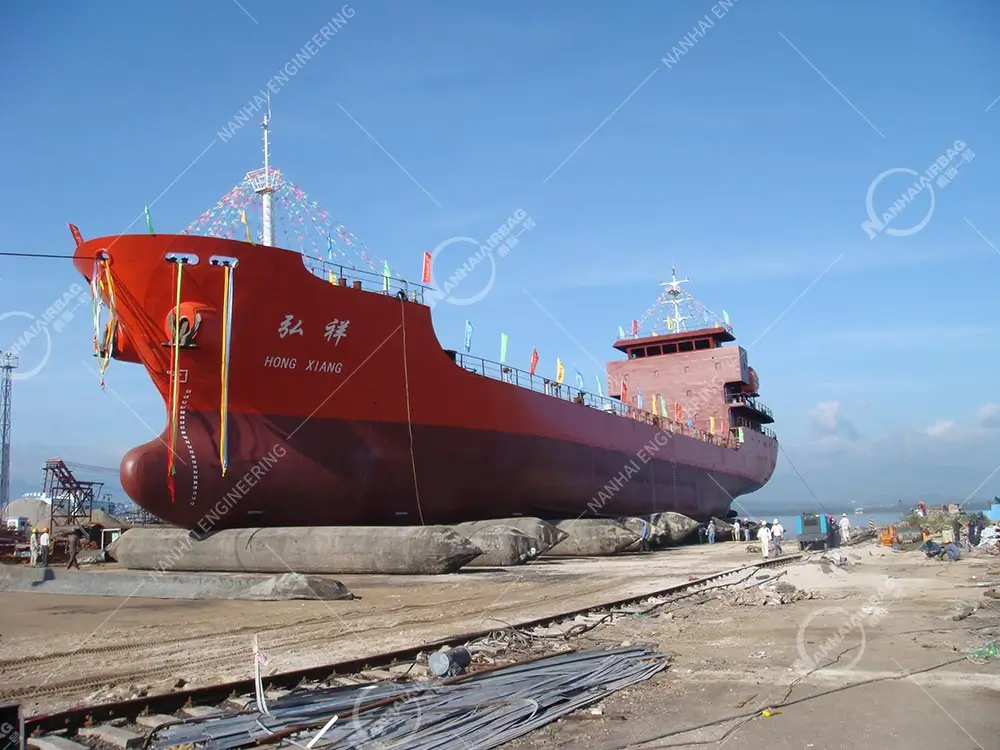Maintenance Measures For Dock Marine Fenders
07/17/2025Green Shipbuilding with Ship Launching Airbags
07/17/2025Why Asia-Pacific Shipyards Are Adopting Ship Launching Airbags
Why It’s Necessary and Urgent
Every day, shipyards across Asia‑Pacific race to build, launch, and salvage vessels quickly—and with razor‑thin margins. Traditional methods like slipways or cranes demand massive infrastructure, stretch timelines, and pose safety hazards. For example, a mid‑sized Korean shipyard recently cut its launch cycle by two days using airbags—saving time and freeing dock space. With booming maritime trade and tighter environmental regulations, there’s no time to waste. Asia‑Pacific shipyards must move faster, greener, and safer—now.

Featured Snippet #1: What are ship launching airbags?
Ship launching airbags are cylindrical, multi‑layer rubber airbags reinforced with tire‑cord fabrics that support and roll a vessel into water—requiring no permanent infrastructure and reducing risk, time, and cost .
Featured Snippet #2: Why Asia‑Pacific leads global adoption
Asia‑Pacific controls over 60 % of the ship launching airbags market in 2024 due to heavy government investment in China, South Korea, India, and infrastructure expansion in Southeast Asia .
Featured Snippet #3: Key benefits over traditional launching methods
Airbags allow flexible, cost‑effective operations: they cut launch prep time by 30–50 %, require fewer workers, lower safety risks, and offer eco‑friendly, modular deployment—without permanent slipways .
Urgency Spotlight
Rapid delivery schedules mean idle drydocks cost money. Environmental tensions and coastal permitting delays heavily penalize traditional methods. For Asia‑Pacific shipyards—building everything from commercial vessels to naval ships—airbags offer a plug‑and‑play solution that saves time, space, safety budgets, and regulatory headaches.
How NANHAI Takes It Further
NANHAI’s next‑gen ES‑type airbags include dual‑end inflation, remote pressure monitoring, and enhanced safety exceeding ISO 14409 standards. In practical terms, they cut setup time by up to 50 %, boost operational control, and launched a 45,000 DWT vessel with fewer workers and zero incidents.
What This Means for Shipyards
Airbag systems allow shipyards to:
- Scale launches with minimal infrastructure
- Adapt to different vessel sizes instantly
- Redeploy equipment for salvage or heavy‑lift tasks
- Meet growing environmental/safety regulations
As global shipbuilding shifts to building larger, more specialized vessels, airbags offer the flexibility and efficiency both traditional methods and rigid infrastructure simply can’t match.
FAQ
Q: How safe are marine airbags compared to cranes or slipways?
A: Airbags offer more controlled movement, reduce heavy equipment use, and meet strict standards like ISO 14409 and CCS/DNV inspections. NANHAI’s ES‑Type airbag boasts <3 % pressure loss/hour and 1.5x burst safety margin.
Q: Can airbags handle large vessels?
A: Absolutely. Airbags have launched ships over 75,000 DWT, and with high‑bearing versions, they scale to very large vessels comfortably.
Q: Are airbags environmentally friendly?
A: Yes—they require no permanent civil works or heavy steel, reduce noise and emissions, and can be recycled or reused for years, aligning with rising eco‑standards.
Q: What are the cost and maintenance factors?
A: While initial costs are higher than basic airbags, long‑term savings from faster launches, fewer crew, and multipurpose use outweigh them. Real‑time pressure monitoring minimizes maintenance risks.
Continue Reading if You Want to Explore…
- Real‑world shipyard case studies and ROI breakdowns
- Technical insights into selecting the right airbag type & size
- Step‑by‑step inspection, maintenance routines, and safety protocols
(NANHAI can provide tailored support and cost‑analysis for your specific operations—just reach out.)
Related Searches to Deepen Your Dive
- Marine airbag inspection checklist
- How to reduce the aging of marine airbags rubber?
- ISO 14409 compliance for marine airbags
- Heavy‑lift applications of marine airbags
- How to Lift a Sunken Vessel Using Marine Salvage Airbags
By clearly explaining why Asia‑Pacific is leading the charge—and highlighting how NANHAI stands out—this article drives knowledge, authority, and interest. For shipyard managers wanting faster, safer launches, the case for airbags has never been stronger.
